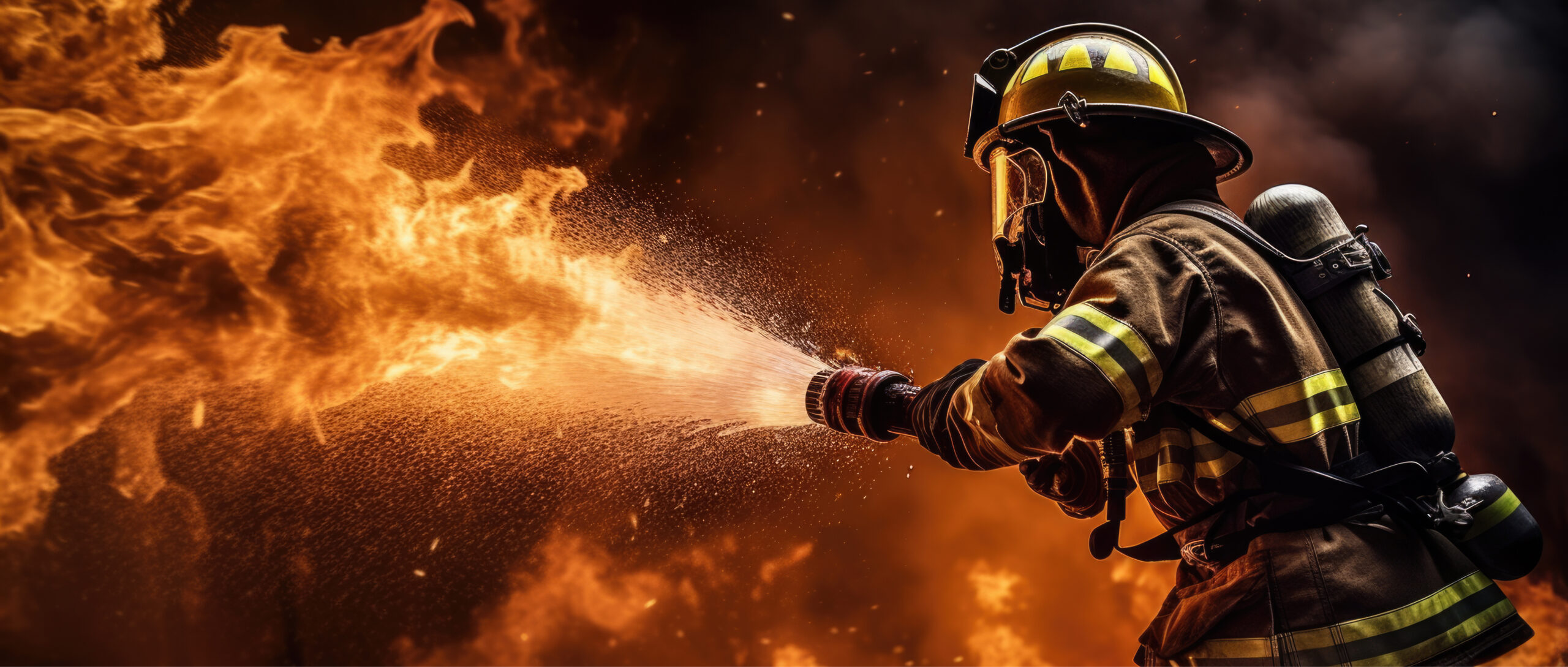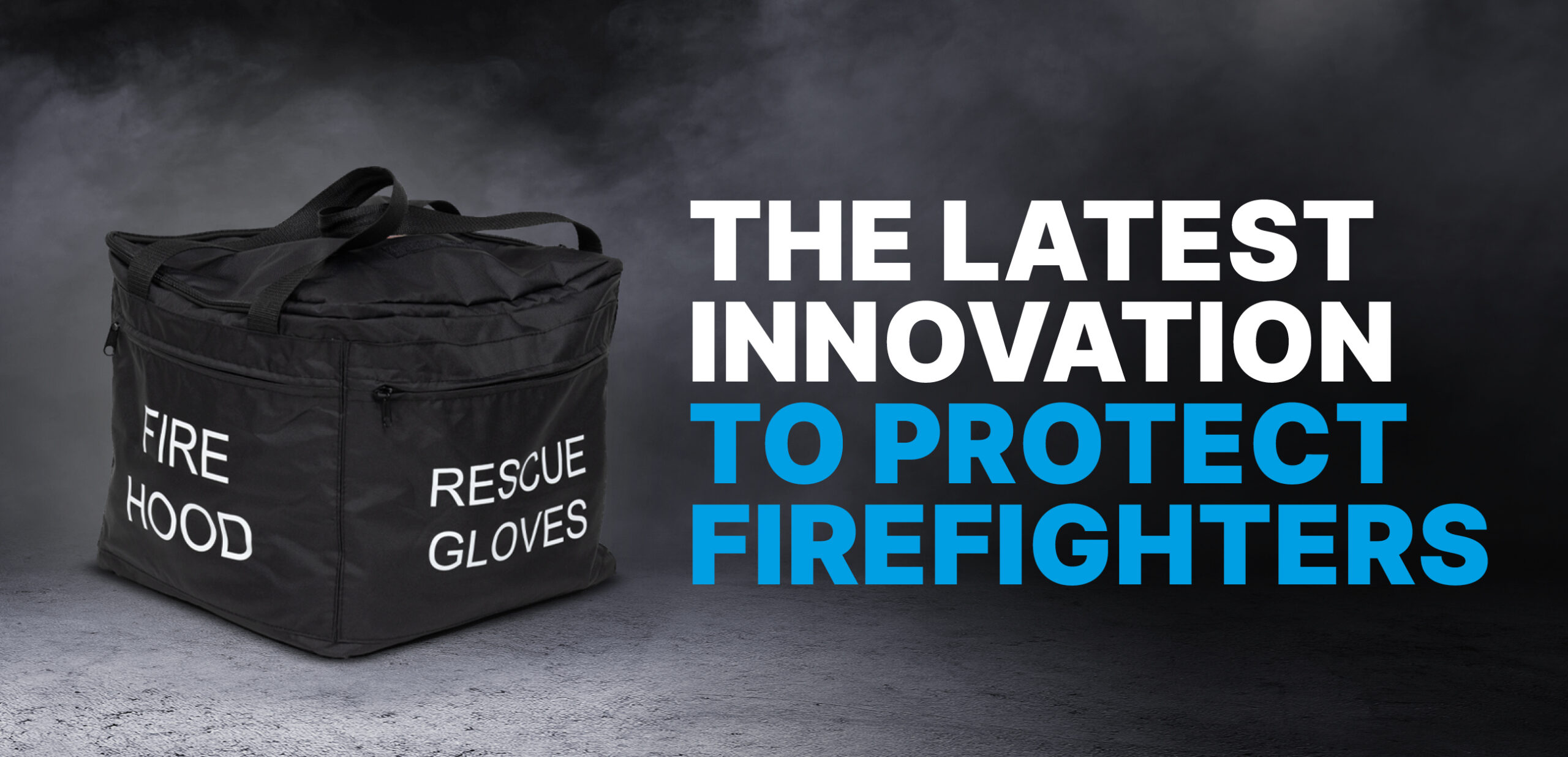Thermal burden and heat stress are significant concerns for firefighter health and safety, particularly during firefighting operations. Research shows that more than 75 per cent of firefighters experience heat-related illness symptoms such as headache, sudden muscle cramps, dizziness, nausea and fainting, and that sudden cardiac death accounts for almost half of all firefighter duty-related fatalities. In addition, heat stress negatively affects cognitive function and decision-making, raising the risk of making mistakes, which in a firefighting situation, can have tragic consequences.
Climate change poses an additional challenge to firefighters, including those working in the UK. In July 2022, firefighters told The Independent that battling fires in 40C temperatures was not something they had experienced before.
One firefighter stated:
“I went through the sweating stage into not sweating and then I felt cold even though it was 40C.”
“Normally if you’re at a fire and you go in hot areas, you can move away from that and cool down.”
“Yesterday, you could move away from it, but you weren’t able to necessarily cool down because the temperatures were so high. So, it was about taking on plenty of water and doing whatever you could to cool off.”
In this article, we look at the impact of thermal burden and heat stress on firefighters and how the Enduro Protect baselayer and other measures can help them manage the associated risks.
What Is Thermal Burden?
Thermal burden refers to the collective physiological strain the human body experiences when exposed to heat. In the context of firefighting, thermal burden encompasses the combined effects of radiant heat from flames, conductive heat from hot surfaces, convective heat from hot air, and high humidity levels. As firefighters work in hot environments, their bodies must continually disperse heat to maintain a stable internal temperature. Prolonged exposure to heat can lead to dehydration, heat exhaustion, heat stroke, and other heat-related illnesses. The severity of the thermal burden depends on factors such as how long a firefighter has been subjected to heat exposure, the type of protective gear worn, the amount of physical exertion required to fight the fire, fitness levels, and heat acclimatisation.
What Is Heat Stress?
Heat stress occurs when heat exposure overwhelms a person’s ability to regulate their internal temperature. Heat stress can cause a variety of symptoms, including increased heart rate, sweating, elevated body temperature, dehydration, fatigue, and impaired mental function. Firefighters are particularly vulnerable to heat stress due to the very nature of their work, including the physical demands of fighting a blaze and the protective clothing and equipment they must wear, which can inhibit heat dissipation.
How Can Firefighters Manage Thermal Burden and Heat Stress?
Managing the risks associated with thermal burden and heat stress is essential to protect firefighters from heat-related illnesses and ensure their ability to perform their duties safely and effectively.
One crucial aspect of managing heat stress and thermal burden is providing firefighters with proper hydration. Firefighters must maintain adequate fluid intake before, during, and after firefighting activities to replenish fluids lost through sweating and to prevent dehydration.
Risk management hydration strategies should encourage firefighters to drink water regularly and provide access to hydration stations or water sources on-site. Additionally, electrolyte-replacement beverages may be necessary to replenish electrolytes lost through sweating, particularly during prolonged operations or in hot and humid conditions.
Another key component of heat stress management is plenty of rest breaks. Firefighters should be given regular opportunities to rest and recuperate during operations to prevent excessive heat exposure and thermal burden. Rest breaks allow firefighters to cool down, rehydrate, and recover from physical exertion, reducing the risk of heat-related illnesses.
Effective monitoring of environmental conditions is also essential for managing heat stress and thermal burden. Firefighters and incident commanders should closely monitor temperature, humidity, and heat index levels to assess the risk of heat stress and adjust work/rest cycles accordingly.
Training and education equip firefighters with the knowledge and skills to effectively recognise and manage heat stress. Firefighters should receive training on identifying the signs and symptoms of heat-related illnesses and strategies for preventing and managing heat stress during firefighting operations.
Although using cooling strategies is another critical aspect of heat stress management for firefighters, they must be careful to avoid cooling down too rapidly, especially post-burn. If firefighters wear a simple T-Shirt or equivalent underneath their turnout gear, and this becomes drenched in sweat, their bodies can cool down too fast during doffing.
Finally, high-quality protective gear, including a baselayer, provides the ultimate protection against thermal burden and heat stress.
How Does the Enduro Protect Baselayer Protect Against Thermal Burden and Heat Stress?
The Enduro Protect base layer excels at controlling body temperature and reducing the potential for heat stress as it cools the wearer’s body at an even rate.
Due to heat exposure and the thickness of firefighter clothing, profuse sweating is inevitable. One of the key benefits of our base layer is its ability to wick sweat away from the body and quickly dry. This means that firefighters feel much more comfortable while performing their roles.
Other features of the Enduro Protect Baselayer include:
- Protection from heat itself.
- Breathable fabric to cool the wearer down.
- Rapid dry to prevent steam burns.
- Deals very effectively in bringing body back to normal temperature.
- Manages body temperature post wear to manage temperature dips.
It is a common myth that wearing extra clothes adds to heat stress. This is untrue – the Enduro Protect Baselayer actually helps to manage thermal burden. Independent testing proves that firefighters experience less Heat Stress wearing the Advance Baselayer than wearing a lightweight T-shirt and shorts under your fire kit. This is because it boasts an Air Permeability test result of 943 and a RET test of 7.0. – results normally only achieved by the most breathable cycling tops.
By adopting Enduro Protect as a primary preventive measure, firefighters automatically shield themselves from the carcinogens in the fire but just as importantly, from, thermal burden and heat stress. This ensures they are healthy both during and after attending a fire, and able to protect themselves and their colleagues.
To discuss any points made in this article, please call the Enduro Protect team on 01235 814112 or email us via [email protected]











